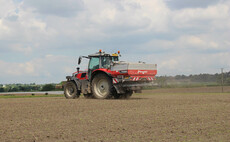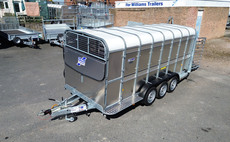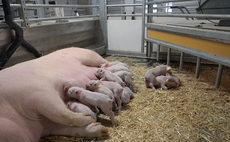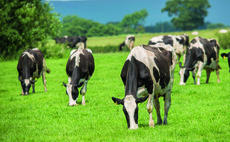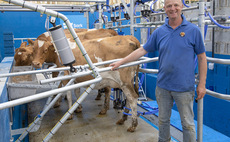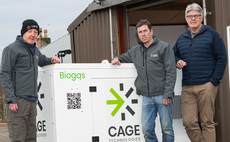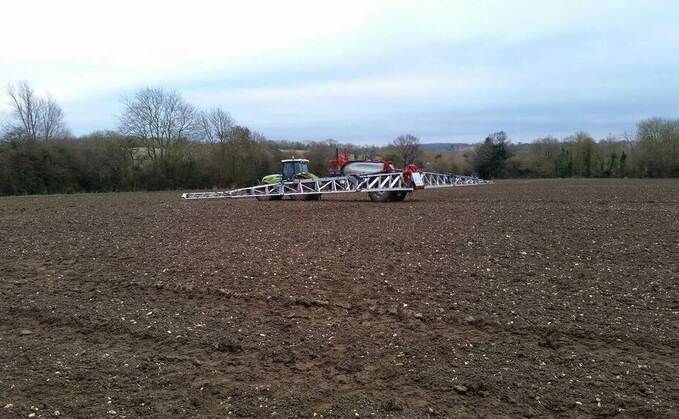
Sprayer capacities continue to creep up, but the concept of a large trailed sprayer is still slightly alien in the UK. Jane Carley finds out why a 6,000 litre, 42m Landquip is the right option for one Suffolk farm.
Despite owning a self-propelled sprayer in the past, Helmingham Estate Farms has remained pretty faithful to the trailed sprayer concept over the years.
Its most recent purchase has seen the business trade up to an impressive 42m boom width, 6,000 litre machine, with a Landquip InTrac. This, says manager Glenn Buckingham, offers us value for money and flexibility.
"It is one less engine and set of wheels to worry about, plus, we have owned a self-propelled sprayer in the past and they sit in the shed all winter, while we can use the spraying tractor for other jobs. There is no real inconvenience to attaching and detaching a trailed sprayer - just two hydraulic connections, five cables and the air system - a three minute job."
Helmingham Estate Farms is 10 miles north of Ipswich, Suffolk, and totals 525ha arable, 200ha grass, 25ha stewardship and 70ha woodland. Cropping is wheat, oilseed rape, winter and spring barley with soya and peas being trialled this year. The Beccles and Hanslope clay soils are drained and are mainly on flat or slightly undulating land, with the ring fenced farm having an average field size of 8ha.
"The sprayer is used for chemicals and fertiliser and covers 4,100-5,000ha per year in total," says Mr Buckingham. "Liquid fertiliser minimises cross-compliance issues and is a lot more accurate. With plenty of capacity and a modern machine, we do not have issues with bottlenecks and the capital costs come down without the need for a fertiliser spreader."
The 6,000 litre capacity InTrac 6042 was ordered in 2016 for delivery on farm for autumn spraying, giving an increase from 36m to 42m with its Pommier aluminium boom.
"Our previous machine was a Landquip Trailblazer - still working on a neighbouring farm - which we purchased in 2002, so we have been using relatively wide booms for some time," he comments. "The reason for the wider boom, still, was to decrease wheelings; it is rarely a problem to operate even in our smaller fields as the boom will fold to 16m to get in a tight corner."
Mr Buckingham comments that in the 18 years since the Trailblazer arrived, technology has moved on somewhat. "We apply some £180,000 worth of inputs a year, so we need to do it well. It is the one machine that covers more ground than any other on the farm so it is worth investing in technology. In fact, with the wide boom, you have a lower cost per metre."
The InTrac has been specified with Norac boom height control and variable geometry, to help manage the boom, with three sensors providing an accurate response on the more undulating land.
Its GPS section control system offers 21 sections and Mr Buckingham says it offers a fast and accurate shut-off response, especially useful in smaller fields and awkward run-ins. "It is interesting to monitor the response on the display screen as you work into a corner - an operator could not switch those sections off as quickly."
The previous machine had section control retrofitted later in the farm's ownership, and he comments: "Whereas volume always had to be overestimated to take account of overlaps, suddenly I was seeing the volumes go down with the new sprayer. With height control and section control, I hardly have to think about the boom."
Quin nozzle holders are fitted for easier change of nozzle without the complication of nozzle-to-nozzle switching, allowing all nozzles and fertiliser umbrella jets to be carried on the machine. All spray nozzles are air induction to reduce drift.
"Liquid management is also improved by Landquip's Poziflow constant pressurised recirculation, while air on/off switching offers a quick nozzle response to get the best out of the section control.
The sprayer also has an N-sensor fitted, helping to target liquid fertiliser applications and fine tune accuracy.
Filling has been adapted to suit the yard layout, says Mr Buckingham: "Some 30 years ago we converted a yard to a filling area, complete with roof, bund and underground tank. However, the water filling position is on the right hand side of the machine, so Landquip simply fitted an additional inlet valve on the opposite side to normal.
We have also had an LED light fitted over the hopper - I can get the sprayer filled in the dark and be in the field at first light during busy periods," explains Mr Buckingham.
The centrifugal pump offers fast filling of 600 litres/minute, dialled down to 100 litres/minute when inducting chemicals. "When you are putting in a simple mix, high speed filling is fine, but for autumn herbicides, for example, it takes time to get all the products in and wash the cans out."
Mr Buckingham says that stability is not a concern, with Landquip's Level Ride air suspension working well on sloping land, but suggests that trailed sprayers need care in difficult situations such as a tight, uneven gateway.
"You do need a good operator - there are three of us working on the farm and we all have sprayer qualifications, but I like to drive it myself where possible. It is a good way to keep up with what is happening in each field."
The InTrac is pulled by a 180hp tractor, and Mr Buckingham says: "The machine is a good load on some of our hills if full, but then high speed is not really required. ‘Low and slow' is one mantra we need to remember."
He adds: "We have maintained a good relationship with Landquip. They have sorted out any little niggles over the years and it is good to be able to specify a sprayer to meet your precise needs."
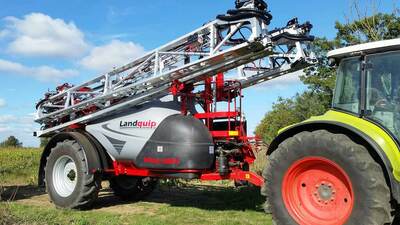
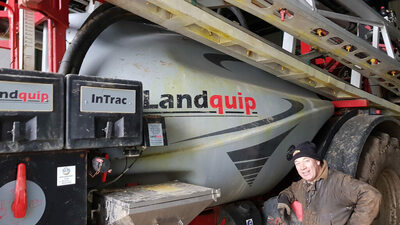
Verdict
The recent purchase of an impressive 42m boom width, 6,000 litre machine, with a Landquip InTrac offers value for money and flexibility, says Mr Buckingham.
Productivity is key, he points out and while some farms would worry about the weight of such a big sprayer there is always flexibility. "If conditions dictate, I am happy to go out and spray with 2,000 litres on board. But with time sensitive work such as ear sprays or PGRs, I am safe in the knowledge that I have got 60ha-worth in the tank and can just fill up and go, which considerably eases the workload.
"We could add a bowser if necessary and this might be the right option for fertiliser to increase output even further, but it can make just as much sense for the extra driver to do another job."



















